Flowers growing in water: a review of the best
Many people dream of creating a unique water corner in their apartment. Some people simply do not have enough time and space to accommodate the original beauty, which consists in creating a water world, others think that creating beauty in water is quite problematic.
In order to correctly and practically implement the creation of a water corner, it is recommended to know which plants growing in water are the most popular and unpretentious for living in a room environment. In addition, there is an interesting approach to how to make a do-it-yourself indoor pond in a small room.
Content:
- Human benefits from flowers growing in water
- Cyperus
- Calla
- Water lily
- Water hyacinth (eichornia)
- Water lily hydrokleis
- Lotus
- Conditions for growing plants in water
- How to make an indoor pond?
Human benefits from flowers growing in water
The human body is designed in such a way that optimal humidity is required for the respiratory system. The increased dryness of the environment can provoke various unpleasant consequences for the internal organs in general. The optimal level of humidity, which must be adhered to in order to feel comfortable, is 40-75%.
In winter, when a large number of heaters are turned on or central heating is on, when steam is breathing from the batteries, the dryness in the apartment rises to critical levels. To remedy the situation, people are trying to purchase expensive devices that allow them to humidify the area of the room. Such a technique not only does not contribute to the comfort in the house, but can also cause various diseases, adversely affecting the internal organs.
In order to achieve comfortable indoor humidity in a natural way, there is one reliable option - to equip a corner with plants living in water or near a reservoir.
These plants boast rich greenery and a romantic appearance. A piece of paradise with lush vegetation, coolness next to it and well-chosen exotic wallpapers contribute not only to humidification in the room, but also to create an atmosphere of comfort and relaxation.
In addition, any indoor plants contribute to the production of oxygen and the purification of the atmosphere inside the apartment. If you choose among such plants that contribute to natural photosynthesis, then it is better to give preference to swamp shrubs. They process carbon dioxide much faster and more actively, saturating the room with fresh aromas. To create such coziness and comfort, you can choose various compositions, but the most interesting and popular are revealed lotus, calla, water lily, hydrokleis, water hyacinth (eichornia), cyperus... To make the right choice, it is recommended that you familiarize yourself with them separately.
Cyperus
This exotic flower is a perennial plant with a slender stem, on which at the very top are linear leaves in the shape of a palm tree.The color of the plates may differ depending on the species - light green, deep green or two-tone.
There are a huge number of species in living nature, but only a few types live in indoor conditions:
- Papyrus - has erect stems, strong structure, topped with leaf blades. The latter have a hanging appearance. In the axils of the leaves, numerous nondescript inflorescences are formed.
- Alternate-leaved (umbrella) - planted at home more often than other representatives of the genus. It can be extended up to 1.7 m in height. The stem is erect, ending in a beautiful umbrella of bright straight leaf plates. The leaves can be up to 25 cm long and up to 1.5 cm wide.
- Sprawling - a shrub of medium height, reaching up to 90 cm. Differs in long basal leaves, wide structure. The upper part is distinguished by a significant narrowing, where the umbrellas are collected in inflorescences of 8-12 pieces in a bunch.
Tsiperus is revealed as the most unpretentious plant that does not require constant care and attention, and feels great in the aquatic environment.
Calla
A plant that does not give up water conditions likes to be almost completely in water. Calla is a marsh flower found in wildlife in the rainforests of South America. The height of the plant can vary from small sizes from 15 cm to substantial diameters up to 50 cm. The shrub feels great not only at sub-zero temperatures, but also in frozen water. Therefore, the house keeping of the plant does not seem to be an unfavorable living condition for the shrub.
The leafy calla laminae are large in diameter. In the center, the sheet has a wide core, and sharpens towards the end. The upper surface is glossy, shiny, with visible veins. When the peduncle is formed, the latter begins to grow directly from the base of the leaf. Inflorescences have a cylindrical shape, represented by a large, thick, bare structure.
The flower is distinguished by grace and nobility.
Its distinctive feature over other plants is the peduncle: a rich yellow shade of a cob, like a blanket, enveloped by a snow-white petal. The inflorescence is interesting not only during the flowering period, but also at the time of fruit setting. After the shrub fades, round, large fruits of a bright scarlet hue are formed within a month. They are firmly attached to the cob. After ripening, the ear becomes covered with mucus and at the end of summer it sinks into the water, where new plants develop from the ripe seeds.
Water lily
One of the most beautiful creatures growing on the water surface is the water lily. It is also called water lily or nymphea. Its historical homeland is considered to be fresh water bodies of Latin America.
The plant has a peculiar structure:
- Its rhizomes are immersed in the bottom substrate, while they have both tubers and horizontal root processes.
- The shrub forms specific deciduous plates - underwater type and floating on the surface of the reservoir.
- The underwater foliage is broad-lanceolate, scarious. They are necessary in order to cover the basal seal with the rudiments of future emergent leaves and buds, developing inflorescences.
- Floating surface foliage is presented in various forms: from heart-shaped to rounded and elongated.
- On the outside of the plate there is a wax coating that does not allow the sheet to get wet.
- When a young leaf is formed, it is first covered with mucus, only after a certain number of days have passed, a plaque appears and the mucus leaves.
- Water lily inflorescences are represented by both sexes. In size, they can vary from the smallest 3 cm in volume to huge, reaching 25 cm in diameter. They are placed on a huge pedicel, a solid structure sometimes reaching a maximum of 5 meters.
- The water lily is cupped or star-shaped.Some species give off a pleasant aroma that can be carried over long distances. At night, the inflorescences cover their graceful flowers, hiding their beauty.
Each bud lives no more than 5 days on average. The shape of the plant can be either semi-double or double. The color varies from pure white to pale pink. The flowering of the plant begins from the first days of May, when the spring sun warms up quite strongly and the reservoir has time to warm up. The duration of flowering continues until the first cold weather.
Water hyacinth (eichornia)
The favorite habitat of Eichornia is the coast of lakes, small rivers or swampy land at the edge of swamps. It feels great when planted in aquariums and decorative pools.
Features of the plant:
- The plant is endowed with a long stem that goes far under the water, clinging to the roots in the above-ground sand.
- A flower, like a water lily, has underwater leaf plates and surface plates. The latter are rounded oval plates. On their surface, when touched, a ribbed surface is felt.
- The leaf itself is located on a long handle, which is tightly attached to the trunk. The plate can be up to 8-9 cm long and up to 7 cm wide.
- The staggered arrangement is characteristic of the underwater leaves. The sheets are narrow and blunt-ended. In length, the underwater leaves are much larger than the above-water ones - they reach 15 cm, but much narrower - only 1 cm.
- During the flowering period, the plant shoots out an arrow, on which there are up to 12 large inflorescences. They are presented in a blue tone, shimmering in a lilac shade. In the central part, the tone darkens somewhat.
- The petals are fringed, with a small yellow speck always present on one of the petals in the upper corner.
Eichornia can rise at a considerable distance above the water level - 55-60 cm. Plants are usually planted in small groups, then their composition seems voluminous and rich than when the plant blooms alone.
There are several types of eichornia:
- Water hyacinth or excellent - differs in the original structure of the plant. Together with an interesting leaf of rich light green color, there is an air chamber on the surface of the reservoir. It is thanks to this structure that the flower is kept afloat.
- Various-leaved - grows in the water column, it is recommended for rooting in an aquarium. Its leaf structure is represented by alternately placed sheet plates, of a straight shape, without a shank. The leaf somewhat resembles leaves fern.
When choosing an original plant, it is necessary to rely on a variety of shrubs so that it does not turn out so that you wanted a surface flower, but you get an underwater bush.
Water lily hydrokleis
The original location of the plant is recorded in tropical places in America, where reservoirs with warm, stagnant water are located. Shrubs tend to grow and thrive quickly. Therefore, if you do not follow it and periodically do not restrain its growth, in a short period of time it is able to fill large water surfaces with a solid carpet of a green hue with bright yellow inflorescences.
Features of the plant:
- Hydrokleis has a dense cylindrical stem, which does not attach to anything and float in the water column. If the water level allows and the rhizomes reach the bottom, then the root sinks into the silt at the base of the river. If the stem accidentally or deliberately breaks off, then it does not die, but takes root again and exists as a separate plant.
- Like many aquatic plants, hydrokleis produces two types of greenery - underwater and above-water, floating on the surface. Under water, leaves are presented in the form of petioles, which are slightly expanded. Elongated leaf plates are placed above the surface, attached to the stem with a cylindrical petiole. The latter do not have a seal inside - they are hollow.
- The leaf plates themselves look like an oval or a small heart. They give off a rich light green or slightly green tint, and also have a glossy sheen. When you touch the leaf, it is felt that the surface of the greenery is covered with wax.
- The inflorescences released by the flower are located above the water at a level of 10 cm. The bud, opening, demonstrates 3 volumetric petals of a pale yellow shade. After flowering, triangular fruits are formed, which contain a large number of seeds.
Lotus
Lotus - powerful plants, with creeping rhizomes, fleshy, knotty structure. It has both internal underwater sheet plates and surface plates. The leaves located on the surface of the water are large, rounded, attached to elongated cuttings. The underwater leaves are flat, while the above-water leaves are concave, funnel-like.
Under natural growing conditions, the inflorescences open 25-30 cm in diameter.
When counted, each flower has from 22-23 petals to 30 pieces. At first glance, they resemble a water lily in appearance. But their differences lie in the fact that in a lotus all flowers and greenery are raised above the surface of the water, while in a water lily, on the contrary, they are drowned.
At the moment of flowering, the buds, when opened, emit a unique aroma. The lotus looks at the sun anyway, if it is in shade, its flowers tend to move or turn to the sunny side. The plant is very thermophilic and requires a lot of sunlight without fear of getting burned.
Conditions for growing plants in water
To grow plants located in water, they need to create all the required conditions. To do this, you need to follow certain rules:
- Location - for indoor placement of aquatic plants, it is required to provide a bright, sunny place. But not all plants can withstand the scorching rays, so either take into account the type of flower, or shade the indoor pond in peak heat.
- Water - do not put the plant directly into cold water just taken from the tap. It should be kept at room temperature. If the water from the tap is chlorinated, then you should not use it, it is recommended to take water from some reservoir. Plants will quickly die in such water.
- Depth - taken into account for different types of colors. But there should be no liquid in the reservoir less than 5 cm. If necessary, the water is constantly topped up.
- Top dressing - it is recommended to add a hydrogel to the water, which, swelling, retains water well and, if necessary, gives it away, but you should not overdo it. Fertilizers are suitable for hydro crops. They need to be mixed in small doses into an aquarium or decorative reservoir.
- Cleaning - foreign microorganisms that do not belong to the plants that were planted will be present in the water without fail. In order to reduce the growth of weeds, you will have to change the water every 2-3 weeks and clean the walls of the container from plaque.
- Wintering - during the dormant period, plants often get rid of excess vegetation, and therefore the aquarium becomes half empty. To stimulate the appearance of new leaves, you can try to rearrange the reservoir to the south window or highlight it additionally phytolamps.
Adhering to certain rules and features of rooting and growing aquatic plants, you can create an original composition in your apartment. The main thing is to place several types of water flowers in one container so that they replace each other and complement each other as they bloom.
How to make an indoor pond?
To make a indoor pond at home, before starting work, you need to prepare a container. The container should be voluminous, containing at least 25-30 liters of water. It is desirable that it be decorative, non-corrosive, waterproof and non-toxic.
A prerequisite for the container is the presence of at least 15 cm, which will be filled with liquid. Containers with a capacity of at least 60-80 liters are best suited for forming a room pond. For reliability, cover the surface with varnish on the outside, and completely cover the inside with sealant.
The main thing is to find interesting and interchangeable aquatic plants and flowers.
The prepared container should be placed in the sunniest place. Having poured water into the container, you should wait until all particles settle and only, at least after 3-4 days, start planting work. You can place any plants from a dwarf water lily to a gorgeous lotus, but it is additionally recommended to place oxygenators that allow you to suppress the growth of algae and weeds.
Thus, an indoor pond will be ready, which does not require close attention and capricious care. But in return, the owner of such an exotic decoration will receive an area for rest and relaxation.
More information can be found in the video:




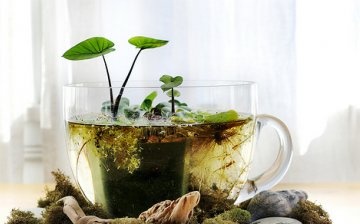
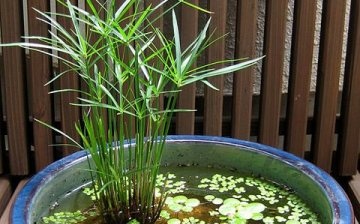
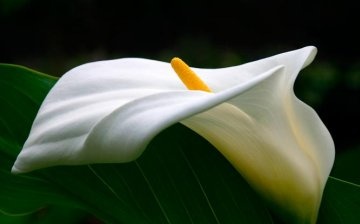
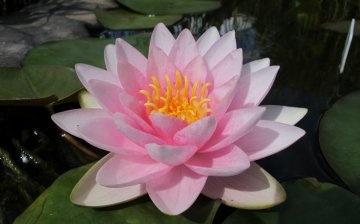
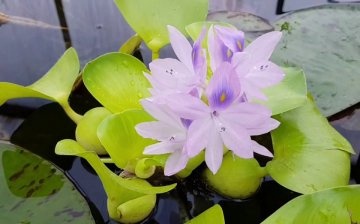

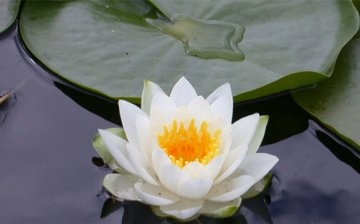
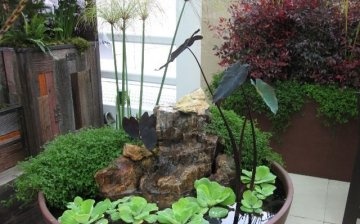
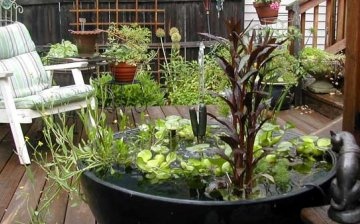










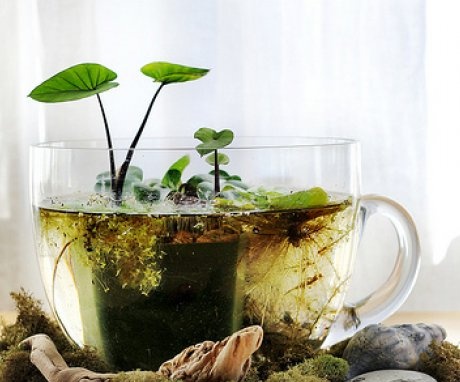
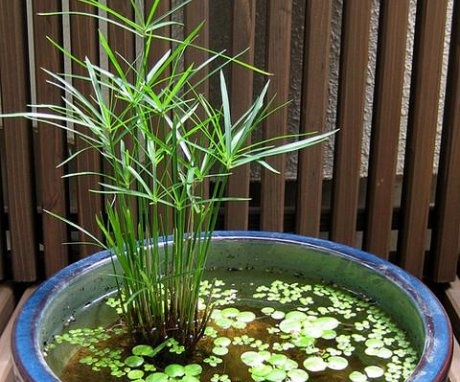
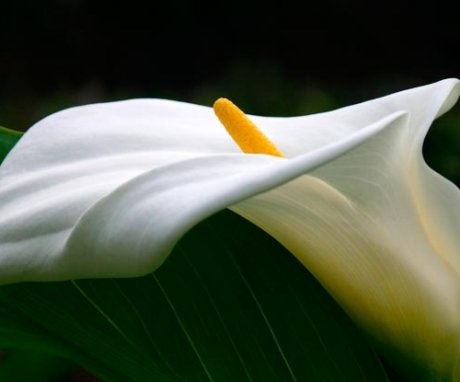
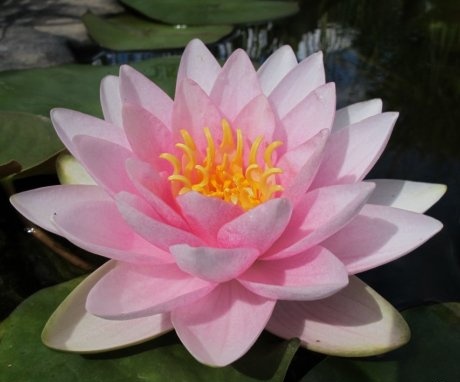
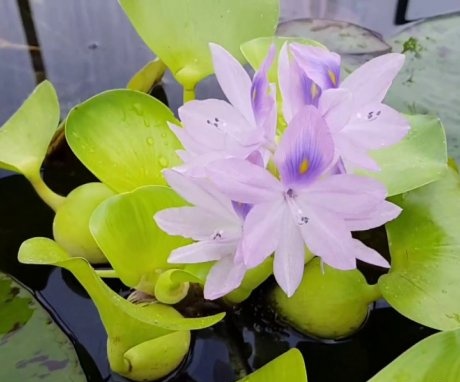
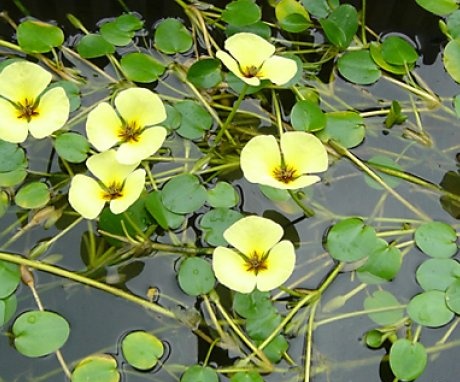
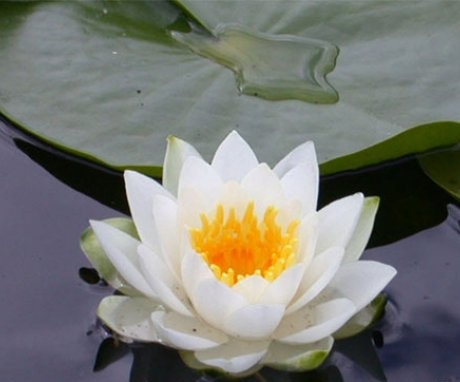
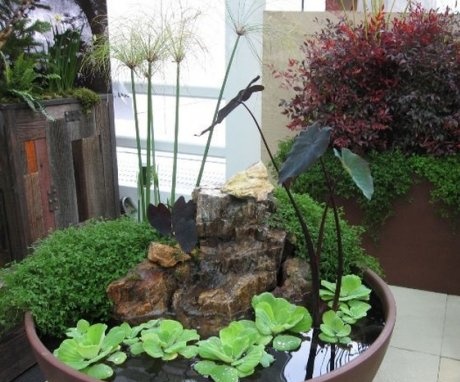
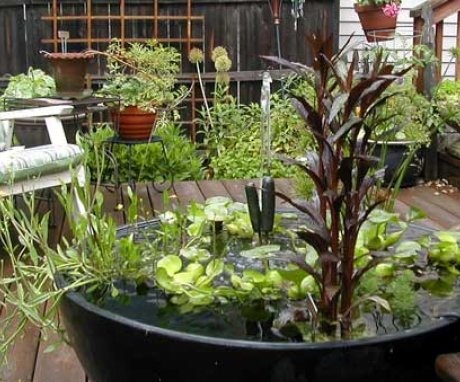
As a child, she loved to ride a boat with her grandfather and collect water lilies. Has anyone noticed that all flowers growing in water are especially delicate and airy compared to ordinary ones?
We tried to plant water lilies from another reservoir in the pond, but nothing happened. They are dying. Although a neighbor in the country at his site planted a decorative pond in a pond. True purchased water lilies.